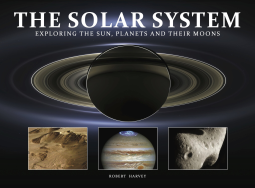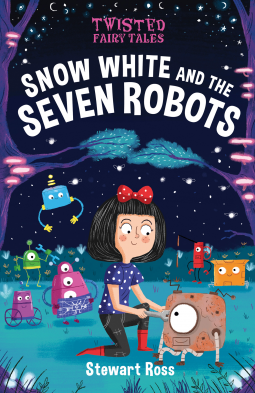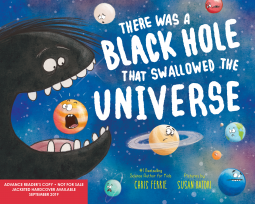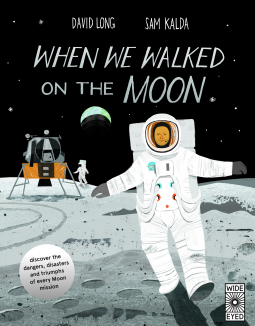
Early Book Review: The Astronomers' Library: The Books that Unlocked the Mysteries of the Universe by Karen Masters

Book Review: Do Other Earths Exist?: Mysteries of Space by Jennifer Lombardo
Book Review: The Solar System: Exploring the Sun, Planets and their Moons by Robert Harvey
Book Review: NASA Missions to Mars: A Visual History of Our Quest to Explore the Red Planet by Piers Bizony
Early Book Review: Black Hole Chasers: The Amazing True Story of an Astronomical Breakthrough by Anna Crowley Redding
Black Hole Chasers: The Amazing True Story of an Astronomical Breakthrough by Anna Crowley Redding is currently scheduled for release on October 5 2021. In April 2019, the Event Horizon Telescope Team unveiled the first ever image of a super massive black hole. This inspiring scientific breakthrough took years of hard work, innovative thinking, and a level of global cooperation never seen before. The challenge was immense. The goal was impossible. They would need a telescope as big as the earth itself. The technology simply didn’t exist. And yet, a multi-national team of scientists was able to show the world an image of something previously unseeable. Based off extensive research and hours interviews with many of the team's ground-breaking scientist, physicists, and mathematicians, Black Hole Chasers is a story of unique technological innovation and scientific breakthroughs, but more importantly, it's a story of human curiosity and triumph.
Audiobook Review: Cosmic Queries: StarTalk's Guide to Who We Are, How We Got Here, and Where We're Going by Neil deGrasse Tyson, James Trefil, Lauren Fortgang
Early Book Review: Beyond: Discoveries from the Outer Reaches of Space by Miranda Paul, Sija Hong
Beyond: Discoveries from the Outer Reaches of Space, written by Miranda Paul and illustrated by Sija Hong, is currently scheduled for release on April 6 2021. Journey far beyond our solar system and explore the marvels of interstellar space. A wonder-filled poem and spectacular illustrations bring readers across the observable universe to encounter dwarf planets, black holes, brand-new stars, and other incredible phenomena.
Beyond: Discoveries from the Outer Reaches of Space is lovely in text and artwork. The use of space as a muse for both poetry and artwork worked very well here- and I spent a good amount of time studying the images on each page. The poems flowed well and were perfectly paired with their corresponding artwork. I think the inclusion of science facts on each page made each page more impactfull. I also liked that the book included resources for further reading and a limited bibliography for readers the book inspires to study further on space in general or a specific subject mentioned in the book. I think this will appeal to many.
Early Book Review: Space Is Cool as F*ck by Kate Howells
Book Review: The Mysteries of the Universe: Discover the best-kept secrets of space by DK Children
Early Book Review: Snow White and the Seven Robots (Twisted Fairy Tales) by Stewart Ross
Early Book Review: There Was a Black Hole that Swallowed the Universe by Chris Ferrie, Susan Batori
Book Review: When We Walked on the Moon: Discover the Dangers, Disasters, and Triumphs of Every Moon Mission by David Long, Sam Kalda
Early Book Review: Astro Pea by Amalia Hoffman
Book Review: The Know-Nonsense Guide to Space: An Awesomely Fun Guide to the Universe by Heidi Fielder, Brendan Kearney
Early Book Review: A Place For Pluto by Stef Wade, Melanie Demmer
Book Review: I Love You, Michael Collins by Lauren Baratz-Logsted
 I Love You, Michael Collins is a middle grade novel by
Lauren Baratz-Logsted. It’s 1969 and the country is gearing up for what
looks to be the most exciting moment in U.S. history: men landing on the
moon. Ten-year-old Mamie’s class is given an assignment to write
letters to the astronauts. All the girls write to Neil Armstrong, all
the boys write to Buzz Aldrin. Only Mamie writes to Michael Collins, the
astronaut who will come so close but never achieve everyone else's
dream of walking on the moon, because he is the one who must stay with
the ship. After school ends, Mamie keeps writing to Michael Collins,
taking comfort in telling someone about what's going on with her family,
her best friend Buster, and her cat. And as the date of the launch
nears, Mamie can't help but wonder: Does no one stay with the ship anymore?
I Love You, Michael Collins is a middle grade novel by
Lauren Baratz-Logsted. It’s 1969 and the country is gearing up for what
looks to be the most exciting moment in U.S. history: men landing on the
moon. Ten-year-old Mamie’s class is given an assignment to write
letters to the astronauts. All the girls write to Neil Armstrong, all
the boys write to Buzz Aldrin. Only Mamie writes to Michael Collins, the
astronaut who will come so close but never achieve everyone else's
dream of walking on the moon, because he is the one who must stay with
the ship. After school ends, Mamie keeps writing to Michael Collins,
taking comfort in telling someone about what's going on with her family,
her best friend Buster, and her cat. And as the date of the launch
nears, Mamie can't help but wonder: Does no one stay with the ship anymore? I Love You, Michael Collins is composed of Mamie's letters to astronaut Micheal Collins. I think many of us who have journaled (on paper or digitally) knows how cathartic it can be to share the events and feelings that are effecting us, even if we think no one is reading or listening. Mamie is sharing the chain of events that take up her summer via letters to a figure that might not ever read, never mind answer, her letters. However, I think her writing down of the events are what help her process and survive a rough summer. The family troubles she goes through give readers a realistic, historical glimpses of the expectations and view of the era, combined with family dynamics that are similar to what some readers might be dealing with themselves. I am not always a fan of books in letter, or journal, format. However, I think the need for connection expressed by Mamie in these letters and the lovely conclusion, make it work beautifully. I felt for Mamie through out the book, and just might have shed some tears for her, because who has not felt like the one left behind?
I Love You, Michael Collins is a well written and touching historical read for the middle grade crowd, and one that I thing will still resonate with readers no matter when they read it. This book will stand the test of time, and just might be a classic in school and public libraries in the near future.


















